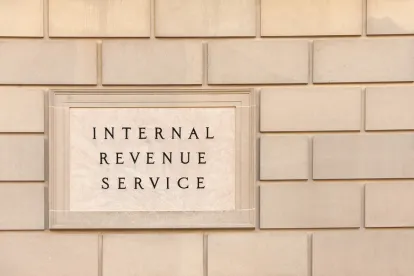On May 4, 2020, the Internal Revenue Service released much-anticipated guidance related to implementing the retirement plan aspects of the Coronavirus Aid, Relief, and Economic Security Act (“CARES Act”) enacted on March 27, 2020, see our article. Although the questions and answers fall short of resolving all open questions, they provide helpful insight into what the additional guidance will look like. A brief overview follows.
Optional Changes
The guidance confirms that the CARES Act changes affecting the distribution and loan provisions of the plan are optional. Employers do not have to implement these rules.
However, even if a retirement plan does not allow Coronavirus-Related Distributions (CRD), individuals can treat a distribution as a CRD on their individual federal tax returns if they meet the requirements of a qualified individual. The guidance also notes that many retirement plans that are designed to accept rollover contributions correspondingly would accept repayments of CRD.
Qualified Individuals
The guidance makes clear that a qualified individual is anyone who: 1) is diagnosed with SARS-CoV-2 or COVID-19, 2) has a spouse or dependent who is diagnosed with SARS-CoV-2 or COVID-19, 3) experiences adverse financial consequences as a result of being quarantined, being furloughed or laid off or having work hours reduced, business closure or inability to find child care due to SARS-CoV-2 or with COVID-19.
However, it falls short of answering a number of questions related to who is suitable as a qualified individual to be eligible to receive a CRD or loan. For example, questions have been raised of whether a spouse or dependent who experiences adverse financial consequences would enable the participant to be treated as a qualified individual and what it means to be quarantined. The IRS guidance acknowledges that the Treasury has received several comments relating to this and is considering an expansion of the list of factors considered.
The guidance also affirms a plan administrator may rely on an individual’s certification of his or her qualified status, unless the administrator has actual knowledge to the contrary. Thus, there is no requirement for an administrator to independently verify an individual’s certification, but should a plan implement independent verification, it will be held responsible for determinations based on the information received.
Taxation Aspects of Distributions
The CARES Act provides taxation relief to qualified individuals receiving CRD, including an option for individuals to elect having their distribution ratably taxed over a 3-year period or taxed in full in the year of the distribution. The IRS guidance includes the following example:
For example, if you receive a $9,000 COVID-19-related distribution in 2020, you would report $3,000 in income on your federal income tax return for each of 2020, 2021, and 2022. However, you have the option of including the entire distribution in your income for the year of the distribution.
Distributions will be subject to reporting on the IRS Form 1099-R. The IRS expects to issue additional guidance related to this reporting later this year. Likewise, individuals receiving a CRD will be required to report the distribution on their individual tax returns, treating the distribution as taxable ratably over a 3-year period or all in the year of the distribution.
Repayments of CRD
The IRS guidance answers important questions about the taxation of CRD repayments. The guidance confirms that individuals desiring to repay CRD will use IRS Form 8915-E, which is expected to be made available later this year, to report the amounts includible in income for a year, and the amount of any repayments. Any individual who repays a portion or the entire amount of the CRD before the end of the three-year repayment period may file amended tax returns to claim a refund of any taxes already paid. The IRS included the following example:
If, for example, you receive a COVID-19-related distribution in 2020, you choose to include the distribution amount in income over a 3-year period (2020, 2021, and 2022), and you choose to repay the full amount to an eligible retirement plan in 2022, you may file amended federal income tax returns for 2020 and 2021 to claim a refund of the tax attributable to the amount of the distribution that you included in income for those years, and you will not be required to include any amount in income in 2022.
Delayed Loan Repayments
The IRS guidance provides helpful insight into the administration of suspended loan repayments, following principles similar to IRS Notice 2005-92, which implemented tax-favored distributions and plan loans under the Katrina Emergency Tax Relief Act of 2005 (KETRA) that was issued in IRS Notice 2005-92. The IRS explained that for loans outstanding on or after March 27, 2020, if any repayment is due between March 27, 2020, and December 31, 2020, the due date for that repayment may be delayed for up to one year. After the suspension period, the loan must be re-amortized to reflect the delay and interest accruing during the delay.
The IRS never fully explained back in 2005 how the KETRA 1-year loan suspension rule should operate, opting instead to announce a “safe harbor” that allowed plans to suspend loan repayments only until the end of the allowable suspension period (maximum 16 months for KETRA loans, but only 9 months for COVID-19 loans). Immediately after the repayment suspension period ended, the remaining loan balance including accrued unpaid interest would be re-amortized so the loan will be repaid in level installments within 5 years from the original loan date PLUS the actual length of the KETRA loan suspension period applicable to each individual.
IRS Notice 2005-92 described how the safe harbor rules applied to these delayed loan repayment rules for Katrina-related loans using the following example:
Example. On March 31, 2005, a participant with a nonforfeitable account balance of $40,000 borrowed $20,000 to be repaid in level monthly installments of $394 each over 5 years, with the repayments to be made by payroll withholding. The participant makes 8 monthly payments until December 1, 2005. The participant’s home is in the Hurricane Katrina disaster area and the participant sustained an economic loss. The participant’s employer takes action to suspend payroll withholding repayments, for the period from December 1, 2005, through the end of 2006, for loans to qualified individuals that are outstanding on or after August 25, 2005 . . . [N]o further repayments are made on the participant’s loan until January 1, 2007 (when the balance is $19,045). At that time, Repayments on the loan resume, with the amount of each monthly installment increased to $423 in order to repay the loan by April 30, 2011 (which is the date the loan originally would have been fully repaid, plus the 13-month loan suspension period that resulted from Hurricane Katrina).






 />i
/>i
